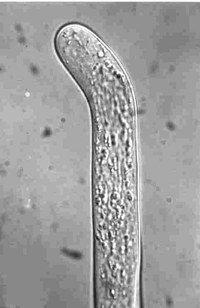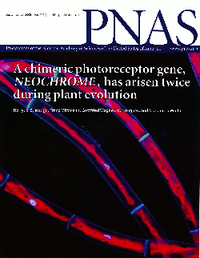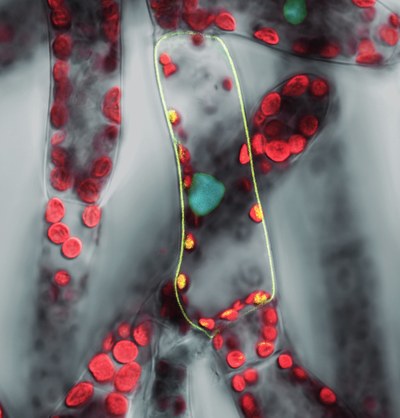Mosses and phytochromes

Homologous recombination and the Physcomitrella genome
Then at the FU in Berlin, a lot of this work was done together with Mathias Zeidler (a PhD student of mine who joined us in Giessen in 2002 after a spell at the Rockefeller in NYC), Franz Mittmann (a PhD student who later came to Giessen as a postdoc for several years too), and Tilman Lamparter (now at Karlsruhe). We found that, both spectrally and biochemically, phytochromes from higher and lower plants are very similar. Just at that time Didier Schäfer in Lausanne discovered that mosses - unlike any other group of plants - show high recombination rates with homologous foreign DNA, thereby allowing efficient chromosomal gene targeting or even replacement. This is an important tool in studying gene function in prokaryotes, yeast and even mammals - but unfortunately it doesn't work in higher plants. Thus mosses provide plant biology with an extremely useful molecular genetic tool. In fact, gene targeting in Physcomitrella is so useful that BASF spent millions of Euros to knock out many thousands of genes and thereby find out what their functions are (at least that was the idea...).
We began work using homologous recombination find out how lower plants use phytochrome to sense light direction. Franz Mittmann cloned four Physcomitrella phytochrome genes de novo, then targetted each of them, knocking them out one after another. We found that one of these mutants showed a weaker response to light direction - so presumably this gene product in particular seems to be responsible for steering the phototropic response (Mittmann et al. (2004) PNAS). With the help of a substantial DFG grant, we tried to find out how...
Neochrome
In the mean time, together with Masamitsu Wada'
Phytochrome and Phototropin
So what about phototrop
In the mean time, though, the Physcomitrella genome had been sequenced. We didn't do any of the dirty work to generate the sequence, but I spent a lot of time searching for interesting genes and annotating them, so I a co-author on the paper (Rensig et al. (2008) Science). A rather disturbing surprise for us was that the genome contained not 4 but 7 phytochrome genes, more than in any other plant species known to date. That of course complicated our work on phytochrome function in Physcomitrella. But help was at hand....
CRISPR
Although homologous recombination in Physcomitrella is nice, CRISPR/Cas9-based genome editing is revolutionary - and works in most organisms. But CRISPR exploits the same machinery that allows homologous recombination, so we wondered if perhaps CRISPR might work especially well in Physcomitrella. Silvia Trogu from Sardinia joined the lab as a PhD student a couple of years ago to exploit this possibility - and it works even better than we had hoped! In fact, we currently hold the world record for multplex mutagenesis by knocking out all 7 Physcomitrella phytochrome genes in a single experiment (Trogu et al. 2020). In fact, the phototropic phenotypes she has found are quite remarkable - so we hope that we will soon be able to explain this paradoxical phenomenon.
My contribution to the Annual Review of Plant Biology "Phytochrome cytoplasmic signaling" focuses on this topic: here's the PDF. If you find our approach to plant phytochrome function interesting and might like to join us, just send me an e-mail.
(All the papers mentioned above are given in the publications list)
